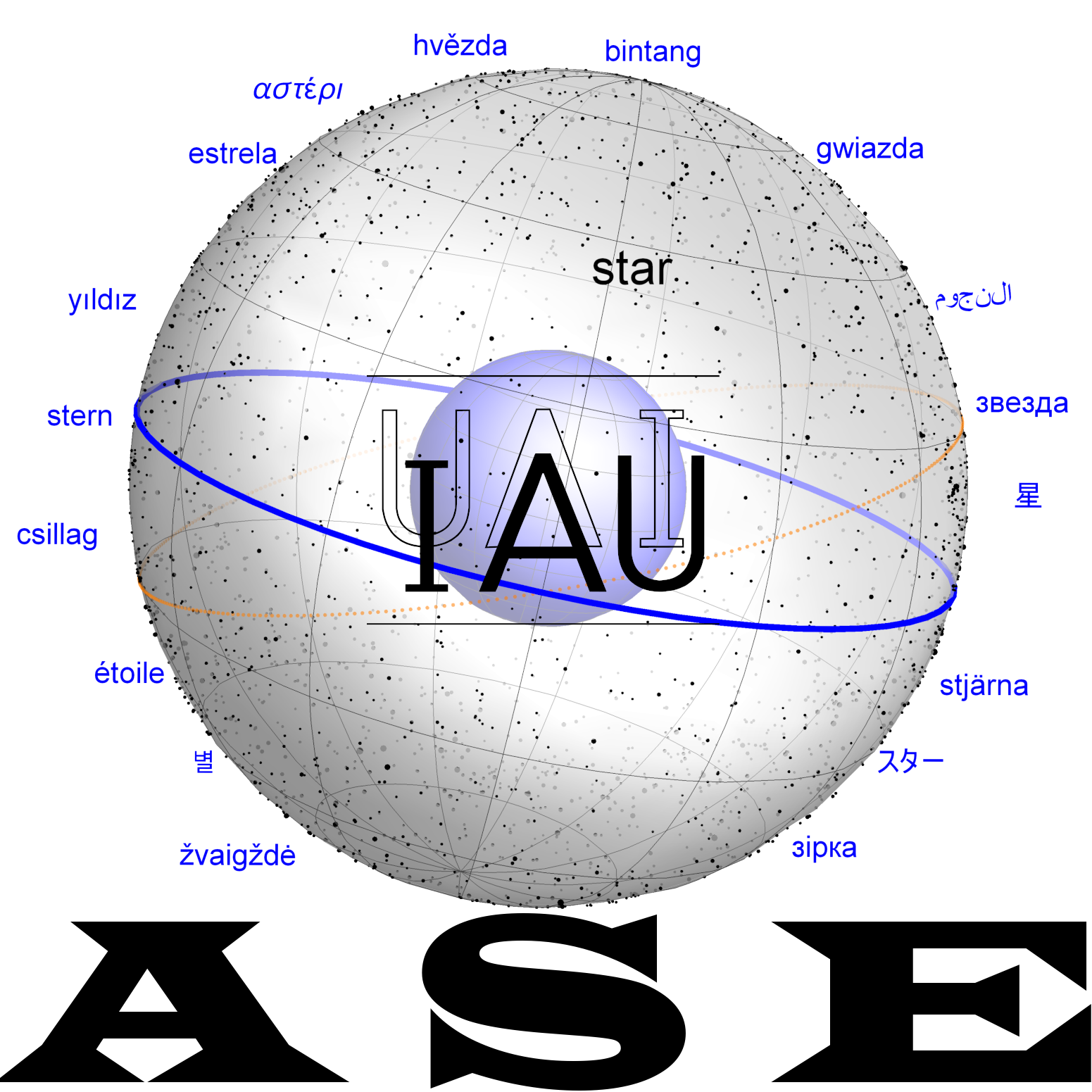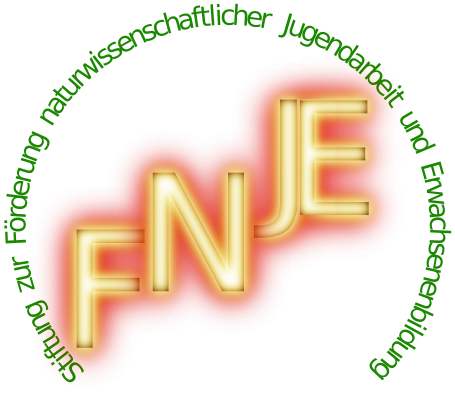ŠUDUN: Difference between revisions
DavidHilder (talk | contribs) (Created page with "<sup>mul</sup>ŠUDUN is an ancient Mesopotamian asterism. ==Dictionary== ===Kurtik with Hilder, Hoffmann, Horowitz, Kim=== = nīru "Yoke"; 1) = constellation roughly corresponding to Bootes (Bootes), 2) = ziqpu I (α Bootis) [G. 379; BPO 2, 15; CAD N/2, 264], see also m27MU.BU.KEŠ2.DA, n45Nīru, sh17ŠU.PA. {| class="wikitable" |+ !Sources !Identifications |- |<nowiki>Lexical texts. (1) Urra XXII series: mulšudu[n] = [ni-i-ru] [MSL XI, 30:26]; muldun4(instead of šudun...") |
DavidHilder (talk | contribs) No edit summary |
||
| Line 2: | Line 2: | ||
==Dictionary== |
==Dictionary== |
||
===Kurtik with Hilder, Hoffmann, Horowitz, Kim=== |
===Kurtik with Hilder, Hoffmann, Horowitz, Kim=== |
||
= nīru "Yoke"; 1) = constellation roughly corresponding to Bootes (Bootes), 2) = ziqpu I (α Bootis) [G. 379; BPO 2, 15; CAD N/2, 264], see also |
= nīru "Yoke"; 1) = constellation roughly corresponding to Bootes (Bootes), 2) = ziqpu I (α Bootis) [G. 379; BPO 2, 15; CAD N/2, 264], see also m27[[MU.BU.KEŠ2.DA|MU.BU.KEŠ<sub>2</sub>.DA]], n45[[Nīru]], sh17[[ŠU.PA]]. |
||
{| class="wikitable" |
{| class="wikitable" |
||
|+ |
|+ |
||
| Line 8: | Line 8: | ||
!Identifications |
!Identifications |
||
|- |
|- |
||
|'''Lexical texts.''' (1) Urra XXII series: <sup>mul</sup>šudu[n] = [ni-i-ru] [MSL XI, 30:26]; <sup>mul</sup>dun<sub>4</sub>(instead of šudun) = ni-i-ru [SpTU III, 114A v 15; Bloch-Horowitz 2015, 105:271ʹ]; see also [SpTU IV, 159:19 + Bemerk.]. (2) <sup>[mul]</sup>mu.bu.keš<sub>2</sub>.da = <sup>mul</sup>šudun [...] / <sup>[mul]</sup>šu.pa = <sup>mul</sup>šudun ... [CT 26, 48, K. 11306:2-3]. |
|||
|<nowiki>Lexical texts. (1) Urra XXII series: mulšudu[n] = [ni-i-ru] [MSL XI, 30:26]; muldun4(instead of šudun) = ni-i-ru [SpTU III, 114A v 15; Bloch-Horowitz 2015, 105:271ʹ]; see also [SpTU IV, 159:19 + Bemerk.]. (2) [mul]mu.bu.keš2.da = mulšudun [...] / [mul]šu.pa = mulšudun ... [CT 26, 48, K. 11306:2-3]. "Prayers to the Gods of the Night." Old Babylonian prayer: a) Erm. 15642: ni-ru-um "Yoke" [Horowitz 2000, 196-197:17], and also [Shileiko 1924, 147; Dossin 1935, 180; Soden 1936, 306]. EAE. See. [BPO 2, III 27-27a, 31-31a, VII i 3'-4', IX 6; BPO 3, 288; SpTU III, 101:12]. "Three Stars Each (Astrolabes)." Astrolabe B. List (12´3): (mul)šudun [Horowitz 2014, 39], see sh22ŠUDUN.IM.U18.LU. "Catalog of 30 stars". Ea 7. See b11BIR. MUL.APIN. Astrological predictions, see section V. "Reports" below. See. [ARAK, 350b]. "Great Star List and Miscellenia." List of names of Mars: mulšudun = dmin(= dṣal-bat-a-nu) "Yoke = Mars" [Mesop.Astrol., App. B:102]. Lists of ziqpu stars. (1) AO 6478: (a) 1 MA.NA ⅓ MA MIN(=šuqultu) | 8 UŠ i-na KI.MIN (= ina qaqqari) | 14 IGI 4 ME DANNA ina KI. MIN(=ina šamê) / ˹TA mul˺ŠUDUN EGIR | EN mulŠUDUN "1⅓ min in weight, 80 on the ground, 14400 miles in the sky from the Back of the Harness to the Yoke", (b) 1½ MA. NA KI.LA2 | 9 UŠ i-na qaq-qa-ri | 16 IGI 2 ME DANNA [i-na AN-e] / TA mulŠUDUN | EN mulŠUDUN.[ANŠE EGIR-ti] "1½ min of weight, 90 on the ground, 16200 miles [in the sky] / From the Yoke to the Back of the Harness" [Thureau-Dangin 1913, 216:5-6, 217 r. 23-24; TU, 21 r. 23-24; HBA, 132-133; Schaumberger 1952, 228-229]. (2) VAT 16436: múlni-i-ri dEn-lil2 // 1 // 7 IGI 2 ME KUŠ3 "Enlil's Yoke // 1 (star) // 7200 cubits" [Schaumberger 1952, 226-227:18]. (3) Sippar Planisphere: a) ˹8˺ UŠ a-na mu[lŠUDUN] "80 to [the Yoke]" (rev. 26), b) mulni-i-ri "Yoke," 2 points on the diagram (obv., Segment 5) [Horowitz-al-Rawi 2001, 171-173:1, 26, 176-178]. The text of LBAT 1502 obv. [...múlN]IN.MAḪ MUL2 AN.TA.GUB.BA | ŠUDUN ana ziq-pi 25 [...] "[Great] Lady — the star of Antagubba. The yoke culminates. 25 [...]" [Donbaz-Koch 1995, 76: i 8', ii 7']. See also: mul4ŠUDUN in the predictions [ACh Suppl. 2, 67 r. 1, 3-6, 10], mulŠUDUN [LBAT, 1556 ii 17ff.], múlŠUDUN [LBAT, 1566:3′, 5′, 7′].</nowiki> |
|||
| |
|||
|- |
|||
|'''"Prayers to the Gods of the Night."''' |
|||
Old Babylonian prayer: a) Erm. 15642: ni-ru-um "Yoke" [Horowitz 2000, 196-197:17], and also [Shileiko 1924, 147; Dossin 1935, 180; Soden 1936, 306]. |
|||
| |
|||
|- |
|||
|'''EAE.''' |
|||
See. [BPO 2, III 27-27a, 31-31a, VII i 3'-4', IX 6; BPO 3, 288; SpTU III, 101:12]. |
|||
| |
|||
|- |
|||
|'''"Three Stars Each (Astrolabes)."''' |
|||
Astrolabe B. List (12´3): <sup>(mul)</sup>šudun [Horowitz 2014, 39], see sh22[[ŠUDUN.IM.U18.LU|ŠUDUN.IM.U<sub>18</sub>.LU]]. |
|||
| |
|||
|- |
|||
|'''"Catalog of 30 stars".''' |
|||
Ea 7. See b11[[BIR]]. |
|||
| |
|||
|- |
|||
|'''MUL.APIN.''' |
|||
Astrological predictions, see section V. |
|||
| |
|||
|- |
|||
|'''"Reports"''' |
|||
below. See. [ARAK, 350b]. |
|||
| |
|||
|- |
|||
|'''"Great Star List and Miscellenia."''' |
|||
List of names of Mars: <sup>mul</sup>šudun = <sup>d</sup>min(= <sup>d</sup>ṣal-bat-a-nu) "Yoke = Mars" [Mesop.Astrol., App. B:102]. |
|||
| |
|||
|- |
|||
|'''Lists of ziqpu stars.''' |
|||
(1) AO 6478: (a) 1 MA.NA ⅓ MA MIN(=šuqultu) | 8 UŠ i-na KI.MIN (= ina qaqqari) | 14 IGI 4 ME DANNA ina KI. MIN(=ina šamê) / ˹TA <sup>mul</sup>˺ŠUDUN EGIR | EN <sup>mul</sup>ŠUDUN "1⅓ min in weight, 80 on the ground, 14400 miles in the sky from the Back of the Harness to the Yoke", (b) 1½ MA. NA KI.LA2 | 9 UŠ i-na qaq-qa-ri | 16 IGI 2 ME DANNA [i-na AN-e] / TA <sup>mul</sup>ŠUDUN | EN <sup>mul</sup>ŠUDUN.[ANŠE EGIR-ti] "1½ min of weight, 90 on the ground, 16200 miles [in the sky] / From the Yoke to the Back of the Harness" [Thureau-Dangin 1913, 216:5-6, 217 r. 23-24; TU, 21 r. 23-24; HBA, 132-133; Schaumberger 1952, 228-229]. (2) VAT 16436: <sup>múl</sup>ni-i-ri <sup>d</sup>En-lil<sub>2</sub> // 1 // 7 IGI 2 ME KUŠ<sub>3</sub> "Enlil's Yoke // 1 (star) // 7200 cubits" [Schaumberger 1952, 226-227:18]. (3) Sippar Planisphere: a) ˹8˺ UŠ a-na <sup>mu</sup>[<sup>l</sup>ŠUDUN] "80 to [the Yoke]" (rev. 26), b) <sup>mul</sup>ni-i-ri "Yoke," 2 points on the diagram (obv., Segment 5) [Horowitz-al-Rawi 2001, 171-173:1, 26, 176-178]. |
|||
| |
|||
|- |
|||
|'''The text of LBAT 1502 obv.''' |
|||
[...<sup>múl</sup>N]IN.MAḪ MUL<sub>2</sub> AN.TA.GUB.BA | ŠUDUN ana ziq-pi 25 [...] "[Great] Lady — the star of Antagubba. The yoke culminates. 25 [...]" [Donbaz-Koch 1995, 76: i 8', ii 7']. See also: <sup>mul</sup>4ŠUDUN in the predictions [ACh Suppl. 2, 67 r. 1, 3-6, 10], <sup>mul</sup>ŠUDUN [LBAT, 1556 ii 17ff.], <sup>múl</sup>ŠUDUN [LBAT, 1566:3′, 5′, 7′]. |
|||
| |
| |
||
|} |
|} |
||
===Additional=== |
===Additional=== |
||
II. Deity. |
'''II. Deity.''' |
||
Prayers and rituals. (1) The Old Babylonian Prayer to the Gods of the Night, see above. (2) The ritual nam.bur2.bi against errors in performing temple services: i-zi-za-nim-ma DINGIR.MEŠ mu-ši-tim / .../ mulŠUDUN A2.ZI.DA GUB.BA mulŠUDUN A2.GUB3.BU GUB. BA / i-šap-par-ku-nu-ši DINGIR ana LU2 LU2 ana DINGIR "Stand before me, gods of the night / .../ (Star) of the Yoke stands to the right (of me), (star) of the Yoke stands to the left (of me). / God sends you to man, man to god" and further "I have sent you to the god who eats my bread, who drinks my water", (i.e. to his personal god) [Caplice 1970, 127, 130:24]. E. Reiner cites this text as evidence for the mediating role of the stars between humankind and deities [Reiner 1995, 15]. (3) In the bīt mēseri series, cf. [Meier 1942, 142:17]. (4) Warning dreams: 'If he ditto (= in his dream ascends to heaven) and the Yoke constellation [...]'" [Oppenheim 1956, 282, 327:42]. (5) The royal sacrifice ina pān mulŠUDUN "before the Yoke," quoted from [CAD N/2, 264b]. Among its epithets: ni-i-ru muš-na-me-ru AN.MI "the Yoke that clears eclipses" [KAR I, Nr. 158 vii 45]. |
Prayers and rituals. (1) The Old Babylonian Prayer to the Gods of the Night, see above. (2) The ritual nam.bur2.bi against errors in performing temple services: i-zi-za-nim-ma DINGIR.MEŠ mu-ši-tim / .../ mulŠUDUN A2.ZI.DA GUB.BA mulŠUDUN A2.GUB3.BU GUB. BA / i-šap-par-ku-nu-ši DINGIR ana LU2 LU2 ana DINGIR "Stand before me, gods of the night / .../ (Star) of the Yoke stands to the right (of me), (star) of the Yoke stands to the left (of me). / God sends you to man, man to god" and further "I have sent you to the god who eats my bread, who drinks my water", (i.e. to his personal god) [Caplice 1970, 127, 130:24]. E. Reiner cites this text as evidence for the mediating role of the stars between humankind and deities [Reiner 1995, 15]. (3) In the bīt mēseri series, cf. [Meier 1942, 142:17]. (4) Warning dreams: 'If he ditto (= in his dream ascends to heaven) and the Yoke constellation [...]'" [Oppenheim 1956, 282, 327:42]. (5) The royal sacrifice ina pān mulŠUDUN "before the Yoke," quoted from [CAD N/2, 264b]. Among its epithets: ni-i-ru muš-na-me-ru AN.MI "the Yoke that clears eclipses" [KAR I, Nr. 158 vii 45]. |
||
III. Identification. |
'''III. Identification.''' |
||
As a constellation: |
As a constellation: |
||
| Line 29: | Line 65: | ||
= α Bootis (Arcturus) [ASM, 86; Schaumberger 1952, 218, 229:I; Horowitz 1993, 156; 1994, 96, note 19]. |
= α Bootis (Arcturus) [ASM, 86; Schaumberger 1952, 218, 229:I; Horowitz 1993, 156; 1994, 96, note 19]. |
||
IV. Parts of the constellation and individual stars. |
'''IV. Parts of the constellation and individual stars.''' |
||
(1) SI mulŠUDUN "Horn of the Yoke," see s24SUḪUR.MAŠ2, VI 8. |
(1) SI mulŠUDUN "Horn of the Yoke," see s24SUḪUR.MAŠ2, VI 8. |
||
V. Astrology. |
'''V. Astrology.''' |
||
Identifications: |
Identifications: |
||
Revision as of 19:12, 30 January 2025
mulŠUDUN is an ancient Mesopotamian asterism.
Dictionary
Kurtik with Hilder, Hoffmann, Horowitz, Kim
= nīru "Yoke"; 1) = constellation roughly corresponding to Bootes (Bootes), 2) = ziqpu I (α Bootis) [G. 379; BPO 2, 15; CAD N/2, 264], see also m27MU.BU.KEŠ2.DA, n45Nīru, sh17ŠU.PA.
| Sources | Identifications |
|---|---|
| Lexical texts. (1) Urra XXII series: mulšudu[n] = [ni-i-ru] [MSL XI, 30:26]; muldun4(instead of šudun) = ni-i-ru [SpTU III, 114A v 15; Bloch-Horowitz 2015, 105:271ʹ]; see also [SpTU IV, 159:19 + Bemerk.]. (2) [mul]mu.bu.keš2.da = mulšudun [...] / [mul]šu.pa = mulšudun ... [CT 26, 48, K. 11306:2-3]. | |
| "Prayers to the Gods of the Night."
Old Babylonian prayer: a) Erm. 15642: ni-ru-um "Yoke" [Horowitz 2000, 196-197:17], and also [Shileiko 1924, 147; Dossin 1935, 180; Soden 1936, 306]. |
|
| EAE.
See. [BPO 2, III 27-27a, 31-31a, VII i 3'-4', IX 6; BPO 3, 288; SpTU III, 101:12]. |
|
| "Three Stars Each (Astrolabes)."
Astrolabe B. List (12´3): (mul)šudun [Horowitz 2014, 39], see sh22ŠUDUN.IM.U18.LU. |
|
| "Catalog of 30 stars".
Ea 7. See b11BIR. |
|
| MUL.APIN.
Astrological predictions, see section V. |
|
| "Reports"
below. See. [ARAK, 350b]. |
|
| "Great Star List and Miscellenia."
List of names of Mars: mulšudun = dmin(= dṣal-bat-a-nu) "Yoke = Mars" [Mesop.Astrol., App. B:102]. |
|
| Lists of ziqpu stars.
(1) AO 6478: (a) 1 MA.NA ⅓ MA MIN(=šuqultu) | 8 UŠ i-na KI.MIN (= ina qaqqari) | 14 IGI 4 ME DANNA ina KI. MIN(=ina šamê) / ˹TA mul˺ŠUDUN EGIR | EN mulŠUDUN "1⅓ min in weight, 80 on the ground, 14400 miles in the sky from the Back of the Harness to the Yoke", (b) 1½ MA. NA KI.LA2 | 9 UŠ i-na qaq-qa-ri | 16 IGI 2 ME DANNA [i-na AN-e] / TA mulŠUDUN | EN mulŠUDUN.[ANŠE EGIR-ti] "1½ min of weight, 90 on the ground, 16200 miles [in the sky] / From the Yoke to the Back of the Harness" [Thureau-Dangin 1913, 216:5-6, 217 r. 23-24; TU, 21 r. 23-24; HBA, 132-133; Schaumberger 1952, 228-229]. (2) VAT 16436: múlni-i-ri dEn-lil2 // 1 // 7 IGI 2 ME KUŠ3 "Enlil's Yoke // 1 (star) // 7200 cubits" [Schaumberger 1952, 226-227:18]. (3) Sippar Planisphere: a) ˹8˺ UŠ a-na mu[lŠUDUN] "80 to [the Yoke]" (rev. 26), b) mulni-i-ri "Yoke," 2 points on the diagram (obv., Segment 5) [Horowitz-al-Rawi 2001, 171-173:1, 26, 176-178]. |
|
| The text of LBAT 1502 obv.
[...múlN]IN.MAḪ MUL2 AN.TA.GUB.BA | ŠUDUN ana ziq-pi 25 [...] "[Great] Lady — the star of Antagubba. The yoke culminates. 25 [...]" [Donbaz-Koch 1995, 76: i 8', ii 7']. See also: mul4ŠUDUN in the predictions [ACh Suppl. 2, 67 r. 1, 3-6, 10], mulŠUDUN [LBAT, 1556 ii 17ff.], múlŠUDUN [LBAT, 1566:3′, 5′, 7′]. |
Additional
II. Deity.
Prayers and rituals. (1) The Old Babylonian Prayer to the Gods of the Night, see above. (2) The ritual nam.bur2.bi against errors in performing temple services: i-zi-za-nim-ma DINGIR.MEŠ mu-ši-tim / .../ mulŠUDUN A2.ZI.DA GUB.BA mulŠUDUN A2.GUB3.BU GUB. BA / i-šap-par-ku-nu-ši DINGIR ana LU2 LU2 ana DINGIR "Stand before me, gods of the night / .../ (Star) of the Yoke stands to the right (of me), (star) of the Yoke stands to the left (of me). / God sends you to man, man to god" and further "I have sent you to the god who eats my bread, who drinks my water", (i.e. to his personal god) [Caplice 1970, 127, 130:24]. E. Reiner cites this text as evidence for the mediating role of the stars between humankind and deities [Reiner 1995, 15]. (3) In the bīt mēseri series, cf. [Meier 1942, 142:17]. (4) Warning dreams: 'If he ditto (= in his dream ascends to heaven) and the Yoke constellation [...]'" [Oppenheim 1956, 282, 327:42]. (5) The royal sacrifice ina pān mulŠUDUN "before the Yoke," quoted from [CAD N/2, 264b]. Among its epithets: ni-i-ru muš-na-me-ru AN.MI "the Yoke that clears eclipses" [KAR I, Nr. 158 vii 45].
III. Identification.
As a constellation:
= the Yoke corresponds to Bootes, especially to Arcturus [G. 379, I].
= Bootes [ASM, 276; BPO 2, 15; Mesop.Astrol., 208, App. C].
As a ziqpu star:
= α Bootis (Arcturus) [ASM, 86; Schaumberger 1952, 218, 229:I; Horowitz 1993, 156; 1994, 96, note 19].
IV. Parts of the constellation and individual stars.
(1) SI mulŠUDUN "Horn of the Yoke," see s24SUḪUR.MAŠ2, VI 8.
V. Astrology.
Identifications:
(1) = Mercury; DIŠ mulŠUDUN (glossa: šu-du-un) ina E3-šu2 (glossa: a-ṣi-šu2) / [šu]-up-pu-pul-ma da-ʼi-im / [KUR] ar2-bu-tu2 il-la-ka / [mulŠUDU]N mulUDU. IDIM.GUD.UD... "If the Yoke, during its appearance, (stands) low and (it) is dim: [the country] will turn to ruins. [Yok]e = Mercury..." [ARAK, 73:1-4], see also (9).
(2) = Jupiter; see (9)-(10) below, and also n45Nīru, II 1, s09SAG.ME.GAR, III 18.
(3) = Mars; see "Great Star List and Miscellenia," and also ts02dṢalbatānu, V 22.
(4) = Saturn (?); mulUDU.IDIM ni-ru ni-ru dNin-gi[r2-su...] "Planet = Yoke, Yoke Ningi[rsu...] [ACh Ištar, 33:11].
(5) = Shupa; see above, and also sh17ŠU.PA, IV 3.
(6) = Giant; mulŠUDUN = mulGU.LA, see s24SUḪUR.MAŠ2, VI 3.
(7) = Goat-Fish; see s24SUḪUR.MAŠ2, VI 6.
(8) = Yoke of Akkad = Shupa; mulŠUDUN KUR.URIki = mulŠU.PA / "Yoke of Akkad = Shupa, " [LBAT, 1577 i 4′].
Predications:
(9) Yoke's visibility during its appearance (= heliacal rising); DIŠ mulŠUDUN ina E3-šu2 da-ʼi-im A. KAL up-pu<-lu> E3 "If the Yoke is dim during its appearance: a late flood will come" (MUL APIN II Gap B 7) [MA, 118]; DIŠ mulŠUDUN ina E3-šu2 it-ta-na-an-paḫ A.KAL Car-pu "If the Yoke flares up during its appearance: the flood will come early" (MUL. APIN II Gap B 8) [MA, 118]; DIŠ mulŠUDUN ina E3-šu2 GIM IZI it-ta-na-na-an-paḫ BURU14 SI.SA2 "If the Yoke flashes like fire during his appearance: harvest will be abundant" (MUL APIN II iv 1) [MA, 119]; DIŠ mulŠUDUN ina E3-šu2 šup-pul-ma da-ʼi-im A. KAL NU GAL2 "If the Yoke, during its appearance, (stands) low and dim: there will be no flood" (MUL APIN II iv 2) [MA, 119]; DIŠ mulŠUDUN ina E3-šu2 ana dUTU.ŠU2.A IGI-šu2 GAR-nu imMAR.TU ZI-ma / ana imU18. LU is-ḫur ina itiKIN UD 10 KAM šal-pu2-ti KUR GAR-an "If the Yoke turns to the west during its appearance, (and with that) the west wind blows and changes direction to become the south wind: on the 10th day of ulul, the country will undergo destruction" (MUL APIN II iv 3-4) [MA, 119]; DIŠ mulŠUDUN ina E3-šu2 ana dUTU. TU.TU IGI-šu2 GAR-nu IGI AN-e IGI.BAR-ma / IM mim-ma la i-zi-iq SU.KU2 GAR-an BAL NAM.GILIM.MA / ša2 I-bi2-dSin LUGAL ŠEŠ. UNUGki ša2 ka-mu-us-su / a-na An-ša-anki DU-ku ERIN2-šu2 EGIR-šu2 i-bak-ku-u2 KIMIN i-ma-aq-qu-tu "If the Yoke, during its appearance towards the east?, is turned around (and) the sky is observed, and the wind does not blow: there will be famine, the dynasty will cease; an omen of Ibbi-Suen, king of Ur, who was led away in chains to Anshan; his troops mourn for him, var.: perish" (MUL APIN II iv 5-8) [MA, 120-121], see also [ACh Ištar, 21:4-15; Suppl. 2, 67 r. 1-15; Sin, 19:3-4; ARAK, 546:4-7; BPO 3, 90, K.3111+:8; 248, K.2346+:47]. In some of the predictions cited, the following identities are assumed: mulŠUDUN = dSAG.ME.GAR : dGU4.UD "Yoke = Jupiter, var.: Mercury", cf. [ACh Ištar, 21:2, 10-11, 14-15].
(10) The Dark Star before the Yoke; DIŠ ina IGI mulŠUDUN mulGI6 IGI GI.NA [...] / ina IGI dSAG.ME.GAR dSAG.UŠ [GUB ...] "If the Dark Star is seen before the Yoke (during its appearance): justice [...], (this means): before Jupiter Saturn [stands ...]" [ACh Ištar, 21:18-19].
(11) The moon is surrounded by a halo and in it stands the yoke (= Mars); see ts02dṢalbatānu, V 22.
(12) The Yoke stands within the Moon; DIŠ mulŠUDUN ina ŠA3 d30 GUB [...] "If the Yoke (=planet?) stands within the Moon: [...] [ACh Ištar, 21:20].
(13) Venus comes close to the horn of the Yoke; see s24SUḪUR.MAŠ2, VI 8.
(14) Venus shimmers and turns toward the Yoke; DIŠ mulDil-bat SUR-ma ana mulŠUDUN NIGIN2 da-gi-lu id-gu-lu a-mi-ru e-mu-ru ... "If Venus shimmers and turns? toward the Yoke (and) observers see (it), the observers observe (it? ): the country will be destroyed, dynasties will be changed, women will fall from (the blows of) weapons or will kill men with weapons, dogs will become furious and bite people." [BPO 3, 52, VAT 10218:124]; DIŠ mulDil-bat SUR-ma ana IGI mulŠUDUN DU-iz DUMU LUGAL AD-šu2 GAZ-ma AŠ.TE DIB-bat "If Venus shimmers and stands before the Yoke: the king's son will kill his father and seize the throne" [BPO 3, 52, VAT 10218:125].
(15) The Stars reach the Yoke; DIŠ MUL.MUL mulŠUDUN KUR-ud ina MU BI GAN2.BA TUR-er [...] "If the Stars reach the Yoke: business activity will decrease this year[...]" [SpTU III, 101:12], see also [TU, 11:5; CAD N/2, 264b].
(16) A shooting star enters the boundaries of the Yoke;DIŠ MUL TA imMAR SUR-ma ana ŠA3 dNi-ri TU ḪI.GAR GAL2 "If a star flares in the west and enters the boundaries of the Yoke: there will be rebellion" (MUL APIN II iii 43) [MA, 115].
Historical Dictionaries
| Kurtik (2022) | Gössmann (1950) |
|---|---|
| = nīru «Ярмо»; 1) = созвездие, приблизительно соответствующее Волопасу (Bootes), 2) = ziqpu I (α Bootis) [G. 379; BPO 2, 15; CAD N/2, 264], см. также m27MU.BU.KEŠ2.DA, n45Nīru, sh17ŠU.PA.
I. Источники. Лексич. тексты. (1) Серия Urra XXII: mulšudu[n] = [ni-i-ru] [MSL XI, 30:26]; muldun4(вместо šudun) = ni-i-ru [SpTU III, 114A v 15; Bloch–Horowitz 2015, 105:271ʹ]; см. также [SpTU IV, 159:19 + Bemerk.]. (2) [mul]mu.bu.keš2.da = mulšudun […] / [mul]šu.pa = mulšudun … [CT 26, 48, K. 11306:2–3]. «Молитвы ночным богам». Старовавилонская молитва: a) Erm. 15642: ni-ru-um «Ярмо» [Horowitz 2000, 196–197:17], а также [Шилейко 1924, 147; Dossin 1935, 180; Soden 1936, 306]. ЕАЕ. См. [BPO 2, III 27–27a, 31–31a, VII i 3'–4', IX 6; BPO 3, 288; SpTU III, 101:12]. «Астролябии». Astrolabe B. Список (12´3): (mul)šudun [Horowitz 2014, 39], см. sh22ŠUDUN.IM.U18.LU. «Каталог 30 звезд». Ea 7. См. b11BIR. MUL.APIN. Астрологические предсказания, см. ниже раздел V. «Рапорты». См. [ARAK, 350b]. «Большой список звезд». Список имен Марса: mulšudun = dmin(= dṣal-bat-a-nu) «Ярмо = Марс» [Mesop.Astrol., App. B:102]. Списки ziqpu-звезд. (1) AO 6478: a) 1 MA.NA ⅓ MA MIN(=šuqultu) | 8 UŠ i-na KI.MIN (= ina qaqqari) | 14 IGI 4 ME DANNA ina KI.MIN(=ina šamê) / ˹TA mul˺ŠUDUN EGIR | EN mulŠUDUN «1⅓ мины веса, 80 на земле, 14400 миль на небе от Задней части Упряжи до Ярма», b) 1½ MA.NA KI.LA2 | 9 UŠ i-na qaq-qa-ri | 16 IGI 2 ME DANNA [i-na AN-e] / TA mulŠUDUN | EN mulŠUDUN.[ANŠE EGIR-ti] «1½ мины веса, 90 на земле, 16200 миль [на небе] / От Ярма до Задней части Упряжи» [Thureau-Dangin 1913, 216:5–6, 217 r. 23–24; TU, 21 r. 23–24; HBA, 132–133; Schaumberger 1952, 228–229]. (2) VAT 16436: múlni-i-ri dEn-lil2 // 1 // 7 IGI 2 ME KUŠ3 «Ярмо Энлиля // 1 (звезда) // 7200 локтей» [Schaumberger 1952, 226–227:18]. (3) Sippar Planisphere: a) ˹8˺ UŠ a-na mu[lŠUDUN] «80 до [Ярма]» (rev. 26), b) mulni-i-ri «Ярмо», на диаграмме 2 точки (obv., Segment 5) [Horowitz–al-Rawi 2001, 171–173:1, 26, 176–178]. Текст LBAT 1502 obv. […múlN]IN.MAḪ MUL2 AN.TA.GUB.BA | ŠUDUN ana ziq-pi 25 […] «[Вели]ая Госпожа — звезда Антагубба. Ярмо кульминирует. 25 […]» [Donbaz–Koch 1995, 76: i 8', ii 7']. См. также: mul4ŠUDUN в предсказаниях [ACh Suppl. 2, 67 r. 1, 3–6, 10], mulŠUDUN [LBAT, 1556 ii 17ff.], múlŠUDUN [LBAT, 1566:3′, 5′, 7′]. II. Божество. Молитвы и ритуалы. (1) Старовавилонская молитва ночным богам, см. выше. (2) Ритуал nam.bur2.bi против ошибок при совершении храмовых служб: i-zi-za-nim-ma DINGIR.MEŠ mu-ši-tim / …/ mulŠUDUN A2.ZI.DA GUB.BA mulŠUDUN A2.GUB3.BU GUB.BA / i-šap-par-ku-nu-ši DINGIR ana LU2 LU2 ana DINGIR «Встаньте передо мной, боги ночи / …/ (Звезда) Ярмо стоит справа (от меня), (звезда) Ярмо стоит слева (от меня). / Бог посылает тебя к человеку, человек к богу» и далее «Я послал тебя к богу, который ест мой хлеб, который пьет мою воду», (т.е. к своему личному богу) [Caplice 1970, 127, 130:24]. Э.Райнер приводит этот текст как свидетельство о посреднической роли звезд в отношениях между человеком и божествами [Reiner 1995, 15]. (3) В серии bīt mēseri, см. [Meier 1942, 142:17]. (4) Предупреждающие сны: «Если он ditto (= в своем сне восходит на небо) и созвездие Ярмо […]» [Oppenheim 1956, 282, 327:42]. (5) Царское жертвоприношение ina pān mulŠUDUN «перед Ярмом», цит. по [CAD N/2, 264b]. Среди его эпитетов: ni-i-ru muš-na-me-ru AN.MI «Ярмо, проясняющее затмения» [KAR I, Nr. 158 vii 45]. III. Отождествление. Как созвездие: = Ярмо соответствует Волопасу, в особенности Арктуру [G. 379, I]. = Bootes [ASM, 276; BPO 2, 15; Mesop.Astrol., 208, App. C]. Как ziqpu-звезда: = α Bootis (Арктур) [ASM, 86; Schaumberger 1952, 218, 229:I; Horowitz 1993, 156; 1994, 96, note 19]. IV. Части созвездия и отдельные звезды. (1) SI mulŠUDUN «Рог Ярма», см. s24SUḪUR.MAŠ2, VI 8. V. Астрология. Отождествления: (1) = Меркурий; DIŠ mulŠUDUN (глосса: šu-du-un) ina E3-šu2 (глосса: a-ṣi-šu2) / [šu]-up-pu-ul-ma da-ʼi-im / [KUR] ar2-bu-tu2 il-la-ka / [mulŠUDU]N mulUDU.IDIM.GUD.UD… «Если Ярмо при своем появлении (стоит) низко и (оно) тусклое: [страна] обратится в руины. [Ярм]о = Меркурий…» [ARAK, 73:1–4], см. также (9). (2) = Юпитер; см. ниже (9)–(10), а также n45Nīru, II 1, s09SAG.ME.GAR, III 18. (3) = Марс; см. «Большой список звезд», а также ts02dṢalbatānu, V 22. (4) = Сатурн (?); mulUDU.IDIM ni-ru ni-ru dNin-gi[r2-su…] «Планета = Ярмо, Ярмо Нинги[рсу…] [ACh Ištar, 33:11]. (5) = Шупа; см. выше, а также sh17ŠU.PA, IV 3. (6) = Великан; mulŠUDUN = mulGU.LA, см. s24SUḪUR.MAŠ2, VI 3. (7) = Коза-Рыба; см. s24SUḪUR.MAŠ2, VI 6. (8) = Ярмо Аккада = Шупа; mulŠUDUN KUR.URIki = mulŠU.PA / «Ярмо Аккада = Шупа, « [LBAT, 1577 i 4′]. Предсказания: (9) Видимость Ярма при его появлении (= гелиакическом восходе); DIŠ mulŠUDUN ina E3-šu2 da-ʼi-im A.KAL up-pu<-lu> E3 «Если Ярмо при своем появлении тусклое: придет позднее наводнение» (MUL APIN II Gap B 7) [MA, 118]; DIŠ mulŠUDUN ina E3-šu2 it-ta-na-an-paḫ A.KAL Car-pu «Если Ярмо вспыхивает при своем появлении: наводнение будет ранним» (MUL.APIN II Gap B 8) [MA, 118]; DIŠ mulŠUDUN ina E3-šu2 GIM IZI it-ta-na-an-paḫ BURU14 SI.SA2 «Если Ярмо вспыхивает, как огонь, при своем появлении: урожай будет изобильным» (MUL APIN II iv 1) [MA, 119]; DIŠ mulŠUDUN ina E3-šu2 šup-pul-ma da-ʼi-im A.KAL NU GAL2 «Если Ярмо при своем появлении (стоит) низко и тусклое: наводнения не будет» (MUL APIN II iv 2) [MA, 119]; DIŠ mulŠUDUN ina E3-šu2 ana dUTU.ŠU2.A IGI-šu2 GAR-nu imMAR.TU ZI-ma / ana imU18.LU is-ḫur ina itiKIN UD 10 KAM šal-pu2-ti KUR GAR-an «Если Ярмо при своем появлении на запад обращено, (при этом) западный ветер дует и переходит в южный: 10-го улулу страна подвергнется разрушению» (MUL APIN II iv 3–4) [MA, 119]; DIŠ mulŠUDUN ina E3-šu2 ana dUTU.TU.TU IGI-šu2 GAR-nu IGI AN-e IGI.BAR-ma / IM mim-ma la i-zi-iq SU.KU2 GAR-an BAL NAM.GILIM.MA / ša2 I-bi2-dSin LUGAL ŠEŠ.UNUGki ša2 ka-mu-us-su / a-na An-ša-anki DU-ku ERIN2-šu2 EGIR-šu2 i-bak-ku-u2 KIMIN i-ma-aq-qu-tu «Если Ярмо при своем появлении на восток? обращено (и) небо обозревает, и ветер не дует: будет голод, династия прекратится; предзнаменование Ибби-Суэна, царя Ура, который в оковах был отведен в Аншан; войска его оплакивают его, вар.: погибают» (MUL APIN II iv 5–8) [MA, 120–121], см. также [ACh Ištar, 21:4–15; Suppl. 2, 67 r. 1–15; Sin, 19:3–4; ARAK, 546:4–7; BPO 3, 90, K.3111+:8; 248, K.2346+:47]. В некоторых из приведенных предсказаний, предполагаются тождества: mulŠUDUN = dSAG.ME.GAR : dGU4.UD «Ярмо = Юпитер, вар.: Меркурий», см. [ACh Ištar, 21:2, 10–11, 14–15]. (10) Темная звезда перед Ярмом; DIŠ ina IGI mulŠUDUN mulGI6 IGI GI.NA […] / ina IGI dSAG.ME.GAR dSAG.UŠ [GUB …] «Если перед Ярмом (при его появлении) Темная звезда видна: справедливость […], (это означает): перед Юпитером Сатурн [стоит …]» [ACh Ištar, 21:18–19]. (11) Луна окружена гало и в нем Ярмо (= Марс) стоит; см. ts02dṢalbatānu, V 22. (12) Ярмо внутри Луны стоит; DIŠ mulŠUDUN ina ŠA3 d30 GUB […] «Если Ярмо (=планета?) внутри Луны стоит: […] [ACh Ištar, 21:20]. (13) Венера подходит близко к рогу Ярма; см. s24SUḪUR.MAŠ2, VI 8. (14) Венера мерцает и поворачивает к Ярму; DIŠ mulDil-bat SUR-ma ana mulŠUDUN NIGIN2 da-gi-lu id-gu-lu a-mi-ru e-mu-ru … «Если Венера мерцает и поворачивает? к Ярму (и) те, кто наблюдают, видят (это), наблюдатели наблюдают (это?): страна будет уничтожена, династия сменится, женщины будут падать от (ударов) оружия или будут убивать мужчин при помощи оружия, собаки придут в бешенство и будут кусать людей» [BPO 3, 52, VAT 10218:124]; DIŠ mulDil-bat SUR-ma ana IGI mulŠUDUN DU-iz DUMU LUGAL AD-šu2 GAZ-ma AŠ.TE DIB-bat «Если Венера мерцает и перед Ярмом стоит: царский сын убьет своего отца и захватит трон» [BPO 3, 52, VAT 10218:125]. (15) Звезды достигают Ярма; DIŠ MUL.MUL mulŠUDUN KUR-ud ina MU BI GAN2.BA TUR-er […] «Если Звезды достигают Ярма: в этом году деловая активность уменьшится […]» [SpTU III, 101:12], см. также [TU, 11:5; CAD N/2, 264b]. (16) Падающая звезда входит в пределы Ярма; DIŠ MUL TA imMAR SUR-ma ana ŠA3 dNi-ri TU ḪI.GAR GAL2 «Если звезда вспыхивает на западе и входит в пределы Ярма: будет мятеж» (MUL APIN II iii 43) [MA, 115]. |
Example |




